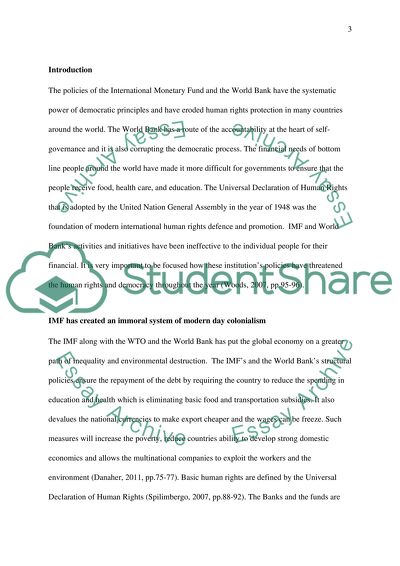Cite this document
(The Policies of the International Monetary Fund and the World Bank Case Study, n.d.)
The Policies of the International Monetary Fund and the World Bank Case Study. Retrieved from https://studentshare.org/finance-accounting/1644865-are-multinational-corporations-more-accountable-to-the-global-public-than-international-institutions-such-as-the-world-bank-and-the-international-monetary-fund-discuss-using-examples-from-australia-and-the-case-study-countries-and-drawing-upon-news-med
The Policies of the International Monetary Fund and the World Bank Case Study. Retrieved from https://studentshare.org/finance-accounting/1644865-are-multinational-corporations-more-accountable-to-the-global-public-than-international-institutions-such-as-the-world-bank-and-the-international-monetary-fund-discuss-using-examples-from-australia-and-the-case-study-countries-and-drawing-upon-news-med
(The Policies of the International Monetary Fund and the World Bank Case Study)
The Policies of the International Monetary Fund and the World Bank Case Study. https://studentshare.org/finance-accounting/1644865-are-multinational-corporations-more-accountable-to-the-global-public-than-international-institutions-such-as-the-world-bank-and-the-international-monetary-fund-discuss-using-examples-from-australia-and-the-case-study-countries-and-drawing-upon-news-med.
The Policies of the International Monetary Fund and the World Bank Case Study. https://studentshare.org/finance-accounting/1644865-are-multinational-corporations-more-accountable-to-the-global-public-than-international-institutions-such-as-the-world-bank-and-the-international-monetary-fund-discuss-using-examples-from-australia-and-the-case-study-countries-and-drawing-upon-news-med.
“The Policies of the International Monetary Fund and the World Bank Case Study”, n.d. https://studentshare.org/finance-accounting/1644865-are-multinational-corporations-more-accountable-to-the-global-public-than-international-institutions-such-as-the-world-bank-and-the-international-monetary-fund-discuss-using-examples-from-australia-and-the-case-study-countries-and-drawing-upon-news-med.


